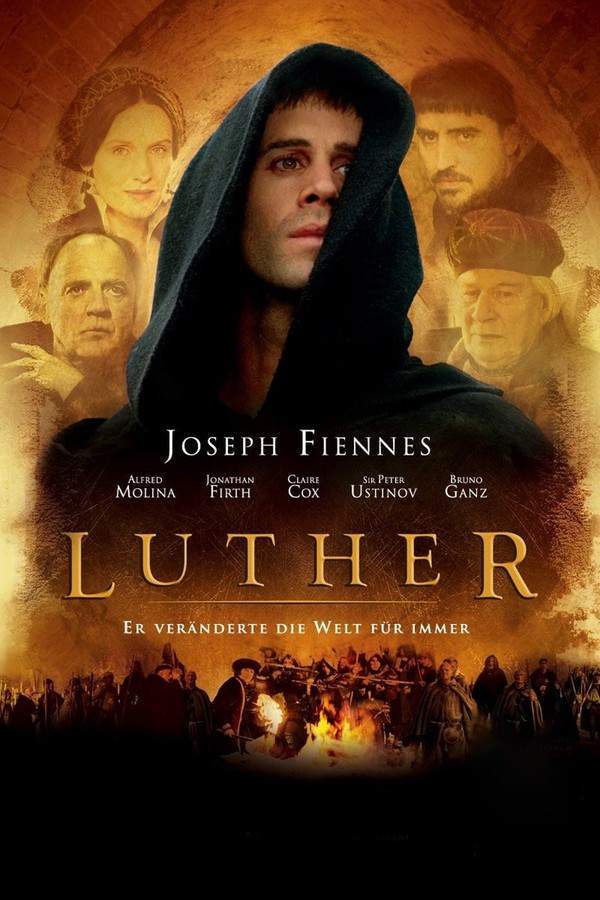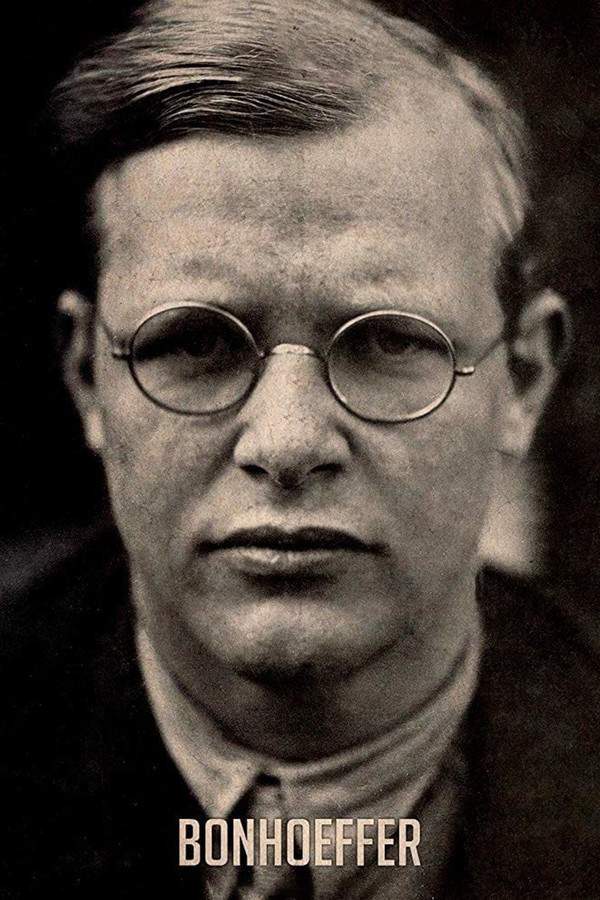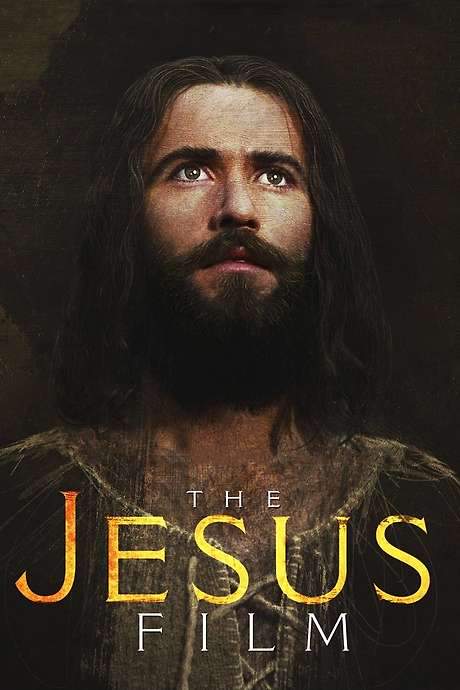
Martin Luther
Year: 1953
Runtime: 105 mins
Language: English
“No man can command my conscience!” A biopic of Martin Luther, covering his life between 1505 and 1530, and the birth of the Protestant Reformation movement.
Warning: spoilers below!
Haven’t seen Martin Luther yet? This summary contains major spoilers. Bookmark the page, watch the movie, and come back for the full breakdown. If you're ready, scroll on and relive the story!
Martin Luther (1953) – Full Plot Summary & Ending Explained
Read the complete plot breakdown of Martin Luther (1953), including all key story events, major twists, and the ending explained in detail. Discover what really happened—and what it all means.
During the life of Martin Luther, the balance of power between the Holy Roman Empire and the Roman Catholic Church frames a dramatic journey of faith, doubt, and reform. > the church had largely forgotten the mercies of God and, instead, it emphasized God’s implacable judgments.
Before entering St. Augustine’s Monastery, Luther is drawn into a wild party with his fellow law students, a moment that triggers a deeper questioning of his path. George Spalatin inquires into Luther’s motive for abandoning a secular future, hinting at the larger questions of faith that will soon consume him. Monastic life does not grant him spiritual peace; he is terrified at his first Mass as a priest, and he confesses to Johann von Staupitz that he cannot love God. The prior even contemplates expelling him for his restless mind, but Johann von Staupitz believes that a combination of study and a pilgrimage to Rome might illuminate a path to grace.
Returning from Rome, Luther argues that the common people could discover God’s mercy more readily if the Holy Scriptures were in their vernacular. He is scolded by the prior, yet the seeds of a reforming impulse take firmer root. He reconnects with George Spalatin, who has also left law for the church to serve Frederick III, Elector of Saxony, and Spalatin asks whether Luther has found what he was seeking. Luther responds, “Not yet,” and eventually Spalatin recommends him to the Elector as a professor of Biblical studies at the University of Wittenberg. In a defining moment, Luther baptizes an infant in the castle church, signaling a shift toward a more intimate, lay-friendly form of faith. He earns his Doctorate of Theology but remains uneasy about relics and their veneration, a discomfort that deepens with his emerging “reformatory discovery” through the Epistle to the Romans. He tells Staupitz that salvation is secured by faith in Jesus Christ alone, a claim that unsettles his mentor.
The movement accelerates in 1517 when Pope Leo X, with Archbishop Albert, arranges a jubilee indulgence in Germany, appointing Johann Tetzel as the principal preacher. Luther publicly opposes indulgences, proclaiming, “Beloved, you cannot buy God’s mercy.” He posts his The Ninety-five Theses on the church door; the theses are copied, translated, and printed across Germany, undermining Tetzel’s sales and provoking a harsh response from the church hierarchy. The matter moves through channels as the theses are forwarded to the pope and debated across the Empire.
In 1519 Andreas Karlstadt challenges Luther and Philipp Melanchthon to Leipzig, where they confront a broader movement linking Luther to Hus. In the debate, [Johann Eck] is aggressive, shouting “Heresy, Dr. Luther, Heresy!” while Luther stands firm, even as Staupitz releases him from his vows. The pope’s fury grows with Luther’s 1520 writings (To the Christian Nobility of the German Nation, On the Babylonian Captivity of the Church, and On the Freedom of a Christian), which are circulated despite threats of excommunication. Luther’s dramatic act of defiance—burning the papal decree—marks a watershed moment; the Elector Frederick then arranges for Luther to appear before the Diet of Worms.
At Worms, Luther refuses to recant, declaring, “Here I stand. I can do no other. God help me. Amen.” Outlawed by Emperor Charles V, Luther is spirited away by the Elector to the Wartburg near Eisenach, where he hides for nearly a year and translates the New Testament into German, making sacred texts accessible to ordinary people. Luther’s exile is not without upheaval, as Karlstadt’s rising tensions in Wittenberg unleash church disturbances that he must address upon his return. In exile, Luther delivers Invocavit sermons to restore order and reconcile his movement with the broader reform effort.
Back in Saxony, Luther marries former nun Katherine von Bora, a union that pleases his father and signals a new form of reform combining faith with family life. Although he cannot join fellow reformers at Augsburg for the Diet of 1530, the Augsburg Confession is presented to the emperor, and the bells ring in thanksgiving for God’s faithfulness to Luther’s generation. The film closes with the congregation—young and old, rich and poor—lifting up Luther’s enduring hymn, A Mighty Fortress Is Our God, a musical testament to a faith reimagined and a church transformed. Cardinal Alexander and other key figures stand as witnesses to a movement that reshaped a nation.
Last Updated: October 09, 2025 at 10:50
Unlock the Full Story of Martin Luther
Don't stop at just watching — explore Martin Luther in full detail. From the complete plot summary and scene-by-scene timeline to character breakdowns, thematic analysis, and a deep dive into the ending — every page helps you truly understand what Martin Luther is all about. Plus, discover what's next after the movie.
Martin Luther Timeline
Track the full timeline of Martin Luther with every major event arranged chronologically. Perfect for decoding non-linear storytelling, flashbacks, or parallel narratives with a clear scene-by-scene breakdown.

Similar Movies to Martin Luther
Discover movies like Martin Luther that share similar genres, themes, and storytelling elements. Whether you’re drawn to the atmosphere, character arcs, or plot structure, these curated recommendations will help you explore more films you’ll love.
Explore More About Movie Martin Luther
Martin Luther (1953) Scene-by-Scene Movie Timeline
Martin Luther (1953) Movie Characters, Themes & Settings
Martin Luther (1953) Spoiler-Free Summary & Key Flow
Movies Like Martin Luther – Similar Titles You’ll Enjoy
Luther (2003) Ending Explained & Film Insights
Bonhoeffer (2003) Story Summary & Characters
Luther and I (2017) Full Movie Breakdown
Bonhoeffer: Agent of Grace (2000) Full Movie Breakdown
Martin Luther: The Idea that Changed the World (2017) Movie Recap & Themes
The Reformer. Zwingli: A Life’s Portrait (2019) Spoiler-Packed Plot Recap
Citizen King (2004) Movie Recap & Themes
Martin Luther (1000) Complete Plot Breakdown
Luther Metke at 94 (1980) Ending Explained & Film Insights
Martin’s Day (1985) Spoiler-Packed Plot Recap
King (1000) Complete Plot Breakdown
Pastor Hall (1940) Ending Explained & Film Insights
Jesus (1979) Full Summary & Key Details
Thomas Müntzer (1956) Complete Plot Breakdown
Little Martin Returns (1948) Film Overview & Timeline

















